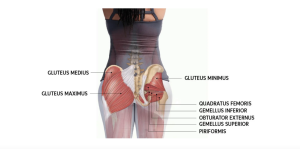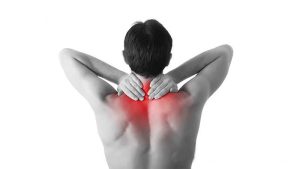Trochanteric Bursitis
Trochanteric bursitis frequently causes pain and tenderness of the outer hip and thigh. Bursitis of the hip is the most common cause of hip pain. It makes it difficult for those affected to lie on the involved side, frequently causing difficulty sleeping. It also causes a dull, burning pain on the outer hip and thigh. Consequently, the pain is worse with excessive walking, exercise, or stair climbing.
Ischial bursitis
The ischial bursa is located in the upper buttock area. Ischial bursitis can cause dull pain in this area that is most noticeable when climbing uphill. The pain can also occur after prolonged sitting on hard surfaces.
What are bursae?
There are two major bursae of the hip, the trochanteric bursa, and the ischial bursa. These are located next to the edges of the femur (thighbone) and pelvic bone, respectively. Stiffness and pain around the hip joint is a sign of inflammation. The trochanteric bursa is located on the side of the hip. Bursitis is not arthritis and therefore not a cause of true joint pain.
A bursa is a closed fluid-filled sac. It functions as a gliding surface to reduce friction between tissues of the body. “Bursae is the plural of “bursa”. The major bursae are located next to the tendons near the large joints, such as the shoulders, elbows, hips, and knees. When a bursa becomes inflamed, it is “bursitis”.
Cause of trochanteric bursitis
Most commonly, bursitis is a noninfectious condition. The inflammation is a result of local soft-tissue trauma or strain injury. On rare occasions, the hip bursa can become infected with bacteria. This condition is septic bursitis. Although uncommon, the hip bursa can become inflamed by crystals that deposit therefrom gout or pseudogout, or from calcinosis as a result of scleroderma.
What are the risk factors for trochanteric bursitis?
Risk factors for hip bursitis include activities that could strain the hip area, including going up and downstairs, repetitive activities such as stair-climber exercising, etc.
Treatments for hip bursitis
The treatment of any bursitis depends on whether or not it involves infection. Noninfectious or aseptic hip bursitis can be treated with home remedies. Ice compresses, rest, and anti-inflammatory and pain medications. Occasionally, it requires aspiration of the bursa fluid. Noninfectious hip bursitis can be treated with an injection of cortisone into the swollen bursa.
Patients with hip bursitis can often benefit from weight reduction, stretching exercises, and wearing proper footwear. Generally, patients should avoid hills, stairs, and direct pressure on the affected hip.
Chiro & Sports Med
Our chiropractors at Chiro & Sports Med are committed to providing chiropractic solutions to address your unique needs, whether you are experiencing an irritated nerve, bulging disc, back pain, neck pain, knee pain, headaches, or even muscular tightness and tension. You may be searching for pain relief after an accident or experiencing an injury. Our mission is to help reduce or eliminate pain and to prevent future problems and injury. Above all, we are here to improve your quality of life, well-being, and your ability to live an active healthy lifestyle.





